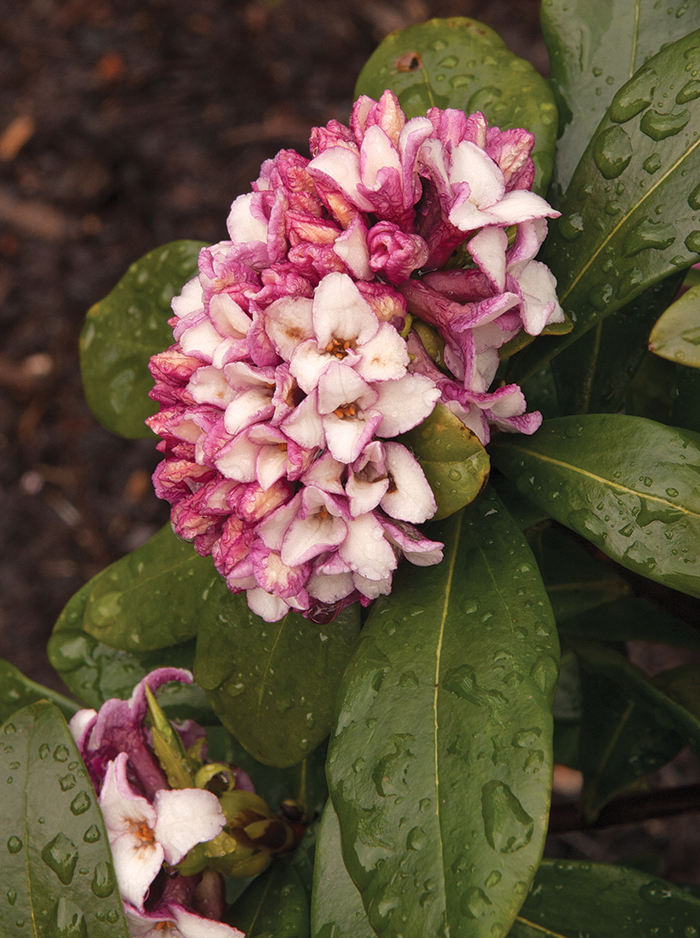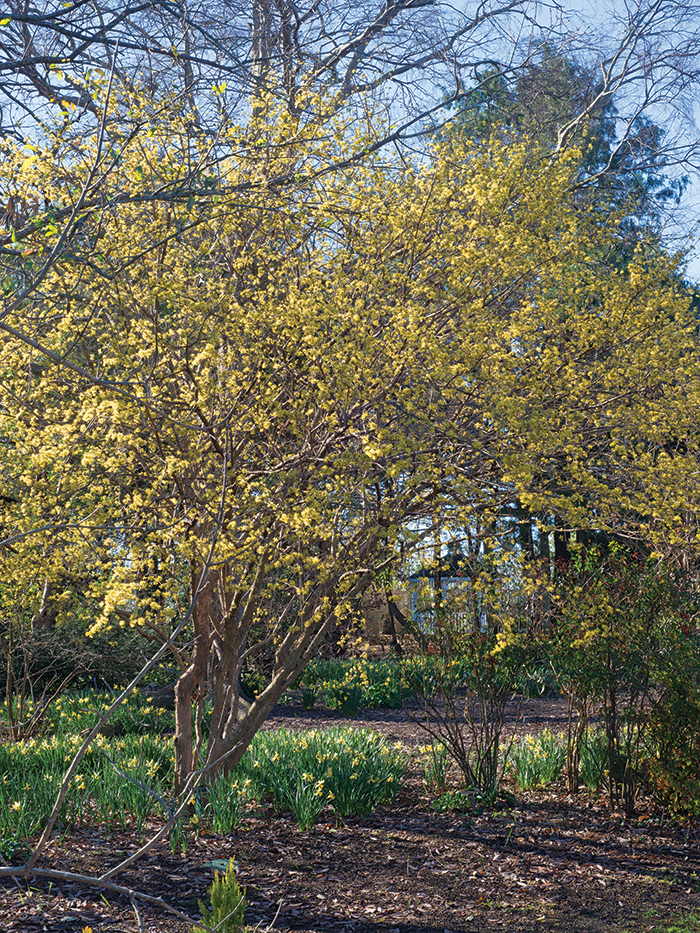If I told you I will be enjoying dogwoods in full flower this winter, you might think: (1) I’m still gulping spiked eggnog leftover from the holidays; or (2) some mad plant breeder has been tinkering with dogwood genes.
Neither is the case. Instead, I have become acquainted with the Japanese cornel dogwood (Cornus officinalis), a non-GMO, real deal of a beauty from the Orient that shakes off the shivers of cold weather to grace barren winter landscapes with unexpected blooms.
Now, about the blooms. Take images you have of blushing white, rounded, four-petal flowers and tuck them away, because the cornel dogwood’s blossoms don’t even remotely resemble the spring displays of a typical southern dogwood (Cornus florida). Imagine branches heavily laced with bright yellow — not white — sprite-like flowers that look like stars bursting. That’s the delightful show this unusual dogwood puts on in mid-February during mild winters, or more typically, in early March. This display is followed by small, oblong red fruit, which are usually eagerly gobbled up by birds.
The cornel dogwood is a small, deciduous tree with a semi-open habit. It will top out at about 20 to 25 feet and about as wide. Want less? Try ‘Kintoki’, a compact cutie that restrains itself to around 15 feet tall and wide.
A site that has well-worked, organically enriched soil will help get this alt-dogwood off to a good start. However, since the Triangle is on the southern end of its preferred planting zones, try to locate it where it will bask in morning sunlight but receive shady relief from summer afternoon heat.
Japanese cornel dogwood is not a one-off, eye-catching oddity. Its near-doppelganger is the cornelian cherry dogwood (Cornus mas) from southern Europe with similar displays of small yellow flowers and red berries. The J.C. Raulston introduction ‘Spring Glow’ is generally the most common cultivar to be found.
Speaking of finding, if you are interested in either of these seasonally strange dogwoods, get ready to do some searching. They aren’t common sights at local nurseries, so call your favorite garden centers for availability either from them or their wholesalers.
Online ordering is another option, but to make the search easier, include cultivar names (‘Kintoki’ or ‘Spring Glow’). I have found stocks vary seasonally, so if you don’t first succeed, keep trying — these beauties are worth the hunt!

Winter Daphne
While Japanese cornel dogwoods and cornelian cherry dogwoods are visual feasts during the winter, they are not the only woody ornamentals capable of putting on unexpected shows in the garden during these chilly times. There are other hardy bushes and small trees that can grace late winter and early spring landscapes, with flowers that are a treat for the eyes and the nose.
Many witch hazels (Hamamelis sp.) conjure up their fragrant blooms on the coldest of days, as do the aptly named wintersweet (Chimonanthus praecox) and winter honeysuckle (Lonicera fragrantissima). Ditto for the perfumed blossoms of two small evergreens: sweetbox (Sarcococca sp.) and winter daphne (Daphne odora).
To Do in the Garden
January
- On a day when it is sunny and semi-warm, turn over. No, not while napping, but rather turn over the organic ingredients in your compost pile to help keep the decomposition process going strong. Also, turn soil over in garden areas designated for annuals this spring to fluff up the dirt and, more importantly, expose overwintering bad bugs to freezing, killing temperatures.
- Trouble could be in store for your houseplants if you are watering them straight from the tap this winter. Such chilly water can shock sensitive plants, which could result in the dropping of leaves. Allow water to warm to room temperature in a container before giving any houseplant a refreshing drink.
- Have squirrels enjoyed digging in your bulb beds this winter? Spread chicken wire as a deterrent over the ground and secure (as well as hide) it with an inch or two of mulch.
February
- If you have swaths of monkey grass (Liriope sp.) snaking about your landscape, before new growth begins, tidy them up by cutting old foliage back to about 3 to 4 inches above ground with a string trimmer or, for faster, more even results, a lawn mower.
- If you have swaths of fescue grass gracing your yard, the middle of this month is a good time to apply a pound of nitrogen fertilizer per 1000 feet of lawn to jump-start the spring growing season to come.
- Thinking about adding a birdbath to your landscape? To prevent predators such as cats and snakes from setting up stalking stands, don’t tuck it too close to bushy shrubs or small trees.
- 2020 Maggy Awards: Restaurants
- 2020 Maggy Awards: Services
- 2020 Maggy Awards: Shopping
- Off the Bench and in the Game
- Strength in Numbers
- Nonprofit Spotlight: Triangle Literacy Council
- Blue-Ribbon Winners!
- Small Business Spotlight: The Closet Factory
- kō•än Public Table
- Liquid Assets: Moonlight Excursion Baltic Porter from Mason Jar Lager Company
- Liquid Assets: Fisher’s Rye Whiskey by Fainting Goat Spirits
- Garden Adventurer: The Dogwoods of Winter
- 2020 Maggy Awards: Lifestyle
- From the Editor: Maggy Winners and the State Fair







